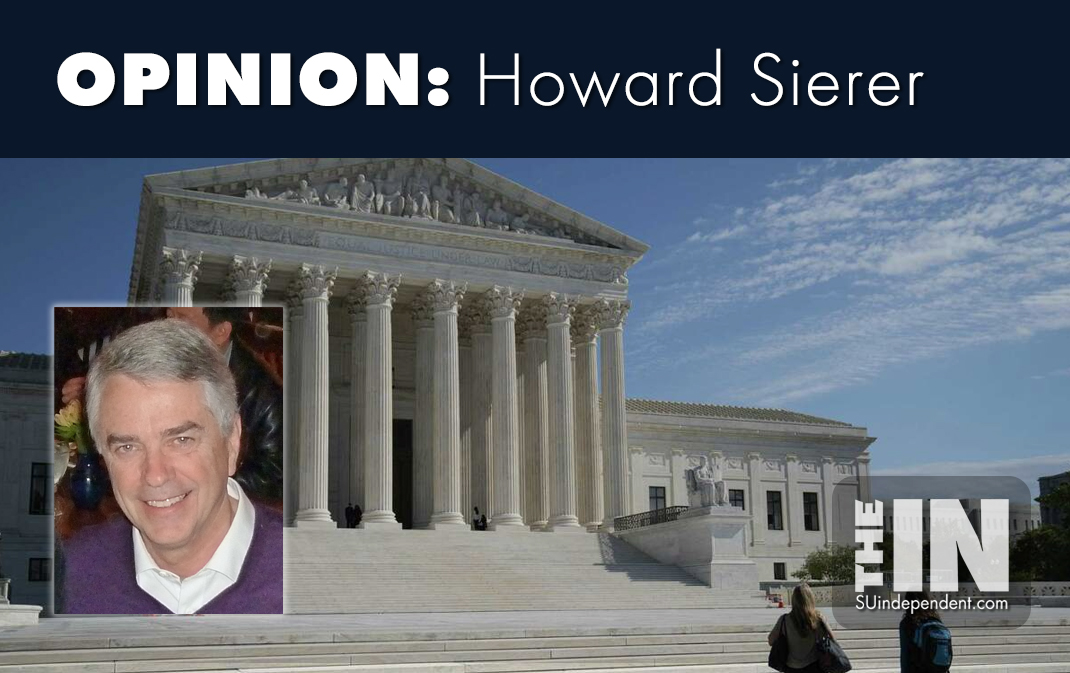
Ending Race-Based Preferences
– By Howard Sierer –
“The way to stop discrimination on the basis of race is to stop discriminating on the basis of race.” So said Chief Justice John Roberts in 2007. In last month’s 237-page decision abolishing affirmative action in college admissions, Roberts reiterated, saying “eliminating racial discrimination means eliminating all of it”
So ends racial social engineering from the bench.
In an impressive legal analysis, attorneys Robert Delahunty and John Yoo state, “In every area of life, the Constitution and federal civil-rights laws forbid the government from using race in making decisions. But the Court carved out one area from this fundamental colorblind principle…a special exception for admission to colleges and universities.”
While the intentions that motivated affirmative action in college admissions had a high-minded purpose – improving the social and economic standing of blacks – it nonetheless was a clear case of court-mandated social engineering that explicitly violated the Constitution’s 14th Amendment. Furthermore, a realistic assessment shows that it has been a policy failure despite supporters’ claims to the contrary.
Affirmative action advocates speak about it in principle. But as described in detail in Richard Sander and Stuart Taylor’s book “Mismatch,” affirmative action never came close to living up to its goals of boosting the prospects of poor blacks who progressives claim are victims of slavery’s legacy. Take a look at recent data.
According to the National Center for Education Statistics (NCES), 38% of white Americans and 37% of black Americans aged 18 to 24 were enrolled in college in 2021. Many colleges across the country accept all applicants, subject only to capacity limitations, and are unaffected by the ruling; our local Utah Tech is one of them.
The focus of the Supreme Court’s decision was so-called elite colleges and universities where applicant numbers far exceed available spots. Graduates of these institutions often have an inside track to prestigious jobs and future leadership positions. Most elite colleges use race to ensure that their student body meets their diversity criteria.
Nonetheless these selective colleges discovered they had a problem. Black Harvard law professor Lani Guinier and Henry Louis Gates Jr., chairman of Harvard’s African-American Studies department, noted that somewhere from one-half to two-thirds of Harvard’s black students were “West Indian and African immigrants or their children, or to a lesser extent, children of biracial couples.”
The message: blacks from immigrant families were far better prepared for college than blacks whose families trace their ancestry to pre-civil war days and hence black immigrants make up 41% of all blacks at Ivy League colleges.
Jeffrey Cord observes: “The large numbers of African immigrants on American college campuses, coupled with the remarkably small numbers of native blacks on those same campuses, calls into question the effectiveness of America’s affirmative action programs.”
I have written in the past that “the argument that IQ is genetically fixed is thoroughly discredited,” citing peer-reviewed research. Instead, the explanation for why descendants of slaves are dramatically underrepresented is that many are trapped in schools controlled by teachers unions that fail to educate them. For proof, look no farther than New York City’s Stuyvesant High School in Manhattan, the most selective of its public schools.
The New York Times reported recently that of 762 new students admitted to the school, only seven were black while 489 were Asian and 266 were white. Elite colleges recruiting from elite high schools like Stuyvesant have been unable to find enough qualified candidates who are black that meet their admission criteria.
As a result, in order to meet their diversity goals, these colleges lower their admission standards for black students. That is racist, pure and simple, and hence the Supreme Court ruling.
Affirmative action in college admissions has been seen as the only chance young black Americans had for future success. Justice Sonia Sotomayor panned the decision as one that “harms not just respondents and students but also our institutions and democratic society more broadly.” Her dissent has been ambushed by the facts.
Instead of admitting blacks ill-prepared by their public schools, elite universities should contribute to improving K-12 education in predominantly black neighborhoods. A surefire approach: support charter schools that have improved black outcomes dramatically. Standing in the way: teachers unions that oppose charter schools and that “own” school administrators and city council members in most larger American cities.
Another option for elite universities: encourage promising but poorly-educated black high school graduates to attend two-year community colleges with specialized four-year college prep curricula, staffed by professors from nearby four-year universities. The goal: prepare them to be ready to join the best of the best at elite universities.
I agree with a former constitutional law professor who said: “I would like to think that if we make good decisions and we invest in early childhood education, improved K-12, if we have done what needs to be done to ensure that kids who are qualified to go to college can afford it, that affirmative action becomes a diminishing tool for us to achieve racial equality in this society.” The professor: Barack Obama, May 13, 2007




Barack Obama’s assessment resonates. Education is a process that starts in early childhood. A two year community college preparation program to the elite schools would mostly signify playing: ‘catch up’.
How does one make a college education more inclusive of the socially underprivileged? One cannot simply put a patch on it and hope for the best.